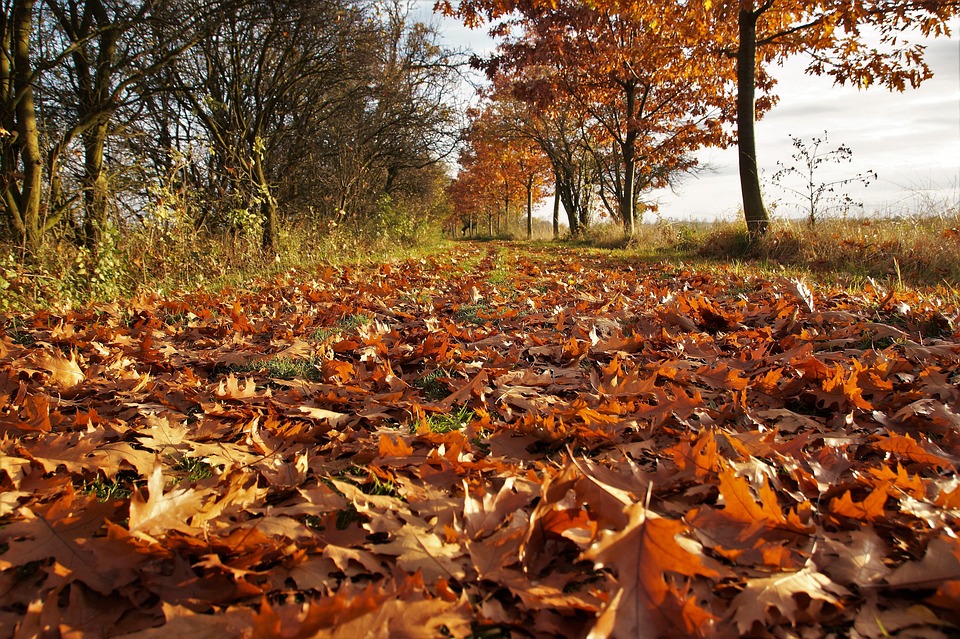
Courtesy Pixabay, Ivabalk, Contributor
Consider the leaf, these lovely little solar collectors! How can any device imagined by the human brain collect light energy from the sun and convert it to food and oxygen while sequestering carbon? A tall order, even with AI! Yet, the humble leaf does it all! By capturing photons of light and utilizing the photosynthetic process, magic occurs!
In brief terms, the light excites electrons in the leaf’s chlorophyll which move through the electron transport chain producing needed energy to build glucose (food) from carbon dioxide and water absorbed from earth’s atmosphere. The glucose molecules along with phosphates, nitrates, and other chemicals are used to build infinite numbers of other molecules, essential for life to occur. Hope that was brief enough!
Yes, I have fallen in love with leaves- from waving grasses to majestic tree leaves. While raking leaves in my yard, I’m smitten by their beauty and functionality, and hope not to strain my back! Leaves from our Freemont cottonwood tree offer pyramids of gold with undulating leaf margins- exquisite! One can easily make a teepee from them, or other possibilities depending on where your imagination takes you. Our aspen trees sprinkle gold coins in between.
Aspen leaves have a special designed petiole, or leaf stem. Rather than the usual round shape, it is flattened which allows it to flip upside down when struck by wind. This makes it doubly efficient at capturing sunlight with both top a bottom receiving light. Chlorophyll is also found in the bark, hidden behind the white dust covering. Wet the bark and the green chlorophyll become visible.
We have many conifers in our yard, whose specialized leaves in the form of needles perform the same function. Their tiny surface area and wax-like coating are excellent adaptations for reducing transpiration (plant evaporation). This allows them to maintain their leaves through the extreme drought of winter’s cold temperatures and frozen ground, whereas broadleaved trees would soon dehydrate if their leaves were not dropped.
We have many other broadleaved trees on our landscape- box elder, green ash, rocky mountain maple, cherry, and river birch. Thus, we are blessed with a myriad of leaf shapes, colors, and texture. I enjoy all varieties- an artist’s delight! One we’re missing is Gamble oak, which was abundant in our N. Ogden backyard. These are a subspecies of the eastern white oak, as the Rocky Mountain bigtoothed maple is a subspecies of the eastern sugar Maple.
Utilitarian uses of leaves add more to the enjoyment, excellent mulch, compost, and piles for the grandkids to frisk in! Leaving some of them on the lawn in a shredded (mowed) condition is good nourishment for the grasses.
A healthy medium sized maple tree has around 100,000 leaves. That’s a lot of solar collectors! How many blades of grass in the average lawn? I leave that one up to you dear Listener!
Jack Greene for Bridgerland Audubon Society, I’m wild about every leaf I know- even poison ivy!
Credits:
Images: Courtesy Pixabay, ivabalk, contributor, https://pixabay.com/photos/autumn-fallen-leaves-the-fallen-2882733/
Featured Audio: Courtesy & Copyright Friend Weller, https://upr.org/ and Anderson, Howe, Wakeman.
Text: Jack Greene, Bridgerland Audubon, https://bridgerlandaudubon.org/
Additional Reading Links: Lyle Bingham, https://bridgerlandaudubon.org/
Additional Reading:
Wild About Utah Pieces by Jack Greene, https://wildaboututah.org/author/jack/
Hicks-Hamblin, Kristina, Composting Autumn Leaves: How to Use Leaves for Compost and Mulch, Gardener’s Path, Ask the Experts LLC., August 30, 2020, https://gardenerspath.com/how-to/composting/leaves/
Yard & Garden Updates, USU Extension, https://extension.usu.edu/yardandgarden/updates/
